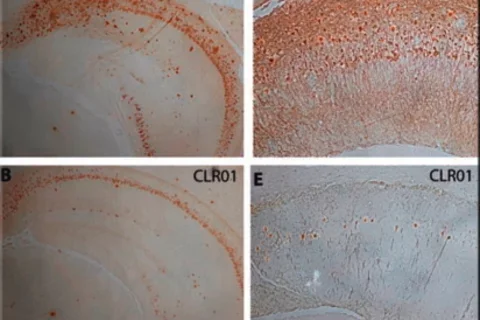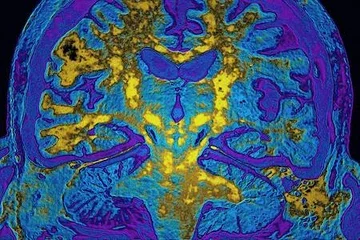Researchers report potential new treatment to stop Alzheimer’s Disease
Molecular ‘tweezers’ break up toxic aggregations of proteins in mouse model

Rearchers at UCLA reported the development of a molecular compound called CLR01 that prevented toxic proteins associated with Parkinson’s disease from binding together and killing the brain’s neurons.
Building on those findings, they have now turned their attention to Alzheimer’s disease, which is thought to be caused by a similar toxic aggregation or clumping, but with different proteins, especially amyloid-beta and tau.
And what they’ve found is encouraging. Using the same compound, which they’ve dubbed a “molecular tweezer,” in a living mouse model of Alzheimer’s, the researchers demonstrated for the first time that the compound safely crossed the blood–brain barrier, cleared the existing amyloid-beta and tau aggregates, and also proved to be protective to the neurons’ synapses — another target of the disease — which allow cells to communicate with one another.
“This is the first demonstration that molecular tweezers work in a mammalian animal model,” said Gal Bitan, an associate professor of neurology at UCLA and the senior author of the study. “Importantly, no signs of toxicity were observed in the treated mice. The efficacy and toxicity results support the mechanism of this molecular tweezer and suggest these are promising compounds for developing disease-modifying therapies for Alzheimer’s disease, Parkinson’s and other disorders.”
Read the full article at UCLA Health



